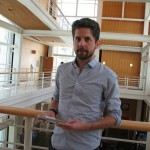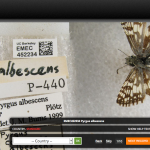In September, UC Santa Cruz professor emeritus of electrical engineering, Don Wiberg tried out for Santa Cruz’s new minor league NBA development team. While Wiberg, 76, did not make the team – he admits to not being very talented or even having played in the past 20 years – the fact that he can still run up and down the court is admirable. Fortunately, continuing advances in sports medicine mean more and more of us will have the chance to stay active well into our autumn years.
Indeed, every few years, a cutting-edge medical procedure bubbles up, promising to repair the broken or prolong the inevitable. Professional athletes, desperate to stay on the field, court, or ice, often play the role of guinea pig for these unproven procedures. Sometimes the results are disastrous. Other times, the new procedure is deemed a miracle and finds it way to the mainstream. Still other procedures are ultimately found to be ineffective and fade away.
Aging and injured athletes often suffer from chronic osteoarthritis – a degeneration of the cartilage of the joints. Currently in vogue for treating osteoarthritis, orthokine therapy – a method for bathing injured areas in super-concentrated doses of the healing components of a patient’s own blood – sits at this crossroads of acceptance.
Among the elite athletes who have tried this experimental therapy are baseball player Alex Rodriguez, golfer Fred Couples and basketball player Kobe Bryant.
Bryant has logged the most career on-court minutes of any current NBA player by a wide margin – 42,667 minutes and counting. Last season, on a severely arthritic right knee, he led the league in minutes played and his scoring and rebound numbers were above his career averages. Bryant, 34, credits his rejuvenation to orthokine therapy.
Yet the $7,400 orthokine therapy, known as Regenokine in the U.S., still seeks FDA approval, though there are no known safety concerns. Until the treatment receives FDA approval, physicians are hesitant to perform it in their clinics.
Developed by doctors in Germany, orthokine therapy is one of a group of therapies called “biologic medicine” in which a doctor draws about two fluid ounces of your own blood, processes it and re-injects it. Because the “medicine” essentially comes from your own body, these therapies are perceived as safer than surgery or drugs.
Once doctors draw your blood, they heat it slightly. The heat jumpstarts inflammation processes that are part of the body’s natural healing mechanisms. Doctors then spin the blood at high speeds to separate it into its various components. A layer of red blood cells pools at the bottom. Above that is a layer of yellowish cells, super-concentrated with molecules that fight inflammation and a soup of proteins that promote healing, prevent further degeneration of joints and block pain. It’s the yellowish cells that doctors inject at the site of injury, generally several times over a few days.
The FDA mandates all human tissues used in medical procedures may only be “minimally manipulated”. The current dilemma with orthokine therapy is that no one knows if heating blood and spinning it in a centrifuge are considered “minimal” manipulations.
Until the FDA weighs in, almost no U.S. doctors are willing to risk the ire of the FDA’s regulators by performing the surgery. As a result, Rodriguez, Couples, Bryant and a small handful of other athletes received the treatment at a clinic in Dusseldorf, Germany.
To date, only one clinical trial for orthokine therapy, published in 2009 in the journal Osteoarthritis and Cartilage, has been conducted. Until more trials are conducted, questions remain about the effectiveness and safety of the procedure.
If I had osteoarthritis and was presented the opportunity (and the financial resources) to undergo orthokine therapy, and get right back out on the basketball court, would I? Probably not. But if my livelihood rested on the health of my knees, I would definitely be checking for flights on Lufthansa.








Comments are closed.